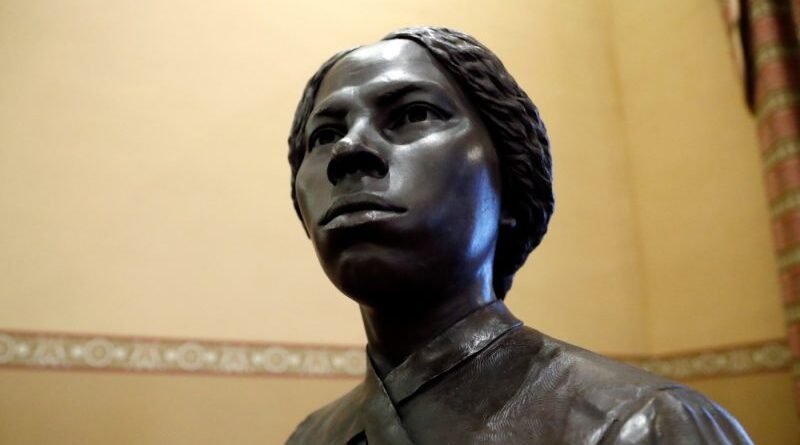Harriet Tubman reference removed from National Parks’ Underground Railroad web page
(The Hill) — The National Parks Service (NPS) has removed a reference to abolitionist Harriet Tubman from its webpage dedicated to the Underground Railroad.
For years, the Parks’ page on the Underground Railroad featured a prominent photo of Tubman.
“The Underground Railroad — the resistance to enslavement through escape and flight, through the end of the Civil War — refers to the efforts of enslaved African Americans to gain their freedom by escaping bondage,” the page initially read.
Tubman, born into slavery in Maryland, escaped around 1849 after learning she and her brothers were to be sold. She would return to Maryland’s eastern shore more than a dozen times, leading many others to freedom and becoming perhaps the most famous conductor of the Underground Railroad.
Now, the NPS has removed the photo of Tubman from its webpage dedicated to the system of trails, rivers and canals. In its place are images of commemorative postal stamps of those who escaped and/or helped others to escape slavery. Tubman’s stamp is featured in this assortment.
But the webpage’s introduction has also changed to describe the Underground Railroad as “one of the most significant expressions of the American civil rights movement” that “bridged the divides of race.” The webpage also changed the phrase “enslaved African Americans” to “enslaved workers.”
Neither the NPS nor the Department of Interior, which oversees the parks, immediately responded to The Hill’s request for comment.
A webpage dedicated to Tubman remains available on the NPS website, but the Underground Railroad’s page is the latest to undergo changes as the Trump administration cracks down on diversity, equity and inclusion efforts.
The changes were first noticed in a review by The Washington Post, which found that dozens of pages have been edited since President Donald Trump took the oath of office in January.
Edits included the removal of references to slavery, while others removed or softened the struggle Black Americans endured in the fight for their rights.
Other pages, such as one examining Benjamin Franklin’s ownership of enslaved people, were completely removed.
Trump indicated he would be looking into historical institutions last month when he signed an executive order directing the Smithsonian Institution to eliminate “divisive narratives.”
The order, “Restoring Truth and Sanity to American History,” directs Vice President JD Vance to oversee the elimination from all federal properties of references to institutional racism, sexism or other elements of history that cast the country in a “negative light.”
Many saw the order as a direct threat to Washington’s National Museum of African American History and Culture (NMAAHC), which has a self-proclaimed mission to “capture and share the unvarnished truth of African American history and culture” and to “illuminate the contributions, struggles, and triumphs that have shaped our nation.”
Trump’s order condemned some of the exhibits at the Smithsonian, including at the NMAAHC. Museums, he said, should “remind Americans of our extraordinary heritage, consistent progress toward becoming a more perfect Union, and unmatched record of advancing liberty, prosperity, and human flourishing.”
“Museums in our Nation’s capital should be places where individuals go to learn — not to be subjected to ideological indoctrination or divisive narratives that distort our shared history,” the order states.
